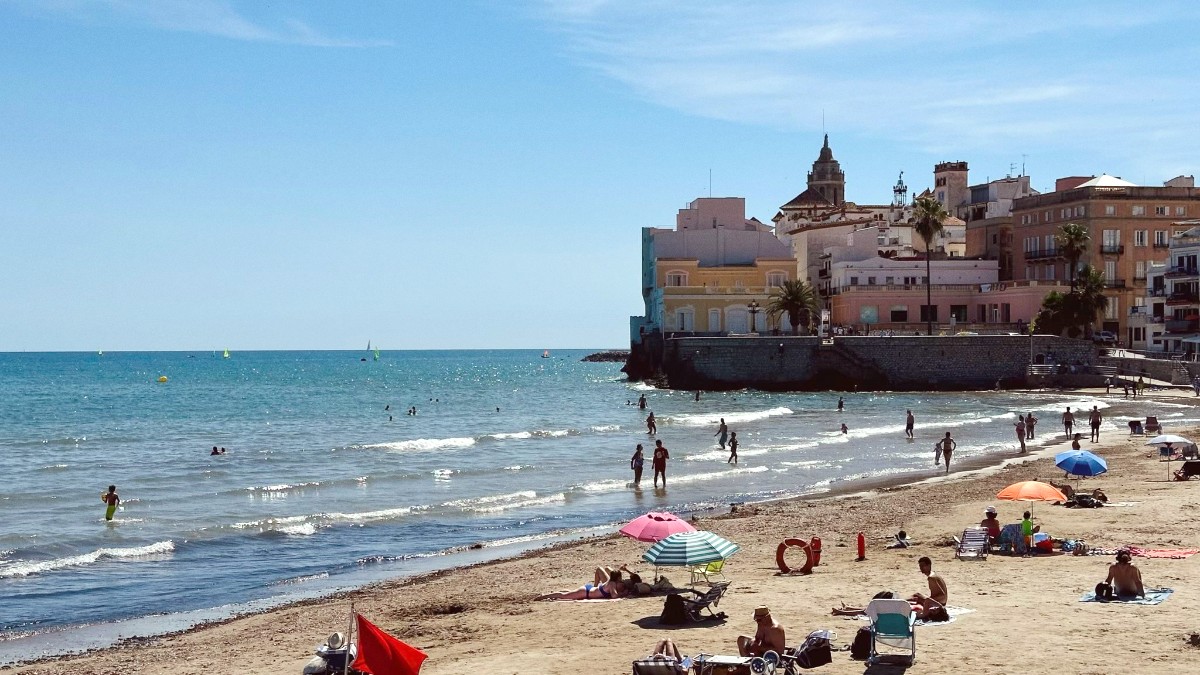
Spain
Catalan cuisine reflects a blend of Roman, Moorish, and French influences, evolving over centuries. Sitges' coastal location highlights seafood.
Historically, local fishermen and farmers provided the ingredients that shaped the region's culinary identity, a heritage that continues to shape local dishes.
Lunch (dinar) is typically 2:00 PM to 4:00 PM. Dinner (sopar) is late, usually 9:00 PM to 11:00 PM or later. Many restaurants close between services.
Common for pre-dinner snacks or light meals. People often stand at the bar while enjoying tapas.
Not mandatory but appreciated (5-10% for good service). Bread is often served, sometimes for a small charge.
A traditional Sitges rice dish, similar to paella. Contains seafood, meat (pork ribs, chicken), and local vegetables, cooked in a rich, savory broth.
Find in traditional Catalan restaurants in Old Town or along the promenade.
A unique salad from the Garraf region with escarole lettuce, salted cod, tuna, anchovies, and black olives, dressed with a rich Romesco-like sauce.
Available in many traditional Sitges restaurants, especially during the winter Xató season.
Similar to paella but made with short, thin noodles (fideus) instead of rice. Typically prepared with seafood, often served with allioli.
Another traditional dish found in seafood restaurants throughout town.
Catalan custard dessert, similar to crème brûlée but typically flavored with lemon zest and cinnamon.
Small, round cakes, often made with marzipan and pine nuts. Traditionally eaten around All Saints' Day (November 1st).
Several upscale restaurants offer refined Catalan or modern European cuisine, often with sea views. Reservations are frequently needed.
Abundant throughout town, offering a mix of traditional Catalan, Spanish, and international dishes. Look for the "Menu del Día."
Numerous tapas bars offer inexpensive small dishes. Bakeries (forn) offer pastries and sandwiches for quick, affordable meals.
Availability is growing. Many restaurants offer vegetarian dishes, and dedicated vegetarian/vegan eateries are becoming more common in Sitges.
Look for salads, grilled vegetables, and specific vegetarian tapas.
Restaurants are increasingly aware of gluten-free ("sin gluten") and other allergies. Learn Spanish/Catalan phrases to communicate restrictions.
Some menus may have allergen information listed.
State allergies explicitly.
Carry your dietary needs in Spanish/Catalan.
Apps like HappyCow find specialized eateries.
For specific items, visit larger supermarkets.
Directly on the sand, offering drinks and meals with your feet almost in the sand, creating a relaxed beachfront ambiance.
Perfect for casual dining, especially in summer months.
Bars specializing in Vermouth, offering a variety of local and international options, often served with small tapas.
A popular tradition for aperitif before lunch.
Mercat Municipal de Sitges provides fresh produce, meat, fish, and local delicacies. It's a good spot to buy ingredients for a picnic or cooking at your rental.
Lunch is the main meal (2-4 PM), dinner is later (9-11 PM). Many kitchens close between services.
Tipping is not mandatory; service charge is often included. For good service, 5-10% is a polite gesture.
Bread is often served; sometimes for a small charge. Use it to soak up delicious sauces.
A hearty fish stew with potatoes, garlic, and sometimes tomatoes. A comforting dish highlighting fresh catch.
A local favorite, especially during cooler months.
Simple yet essential Catalan dish: bread rubbed with ripe tomato, drizzled with olive oil, and sprinkled with salt.
Accompanies almost every meal, a versatile side.
Green onions, grilled and served with Romesco sauce. Popular in late winter or early spring at "calçotades."
Roasted chestnuts and sweet potatoes, sold from street stalls in autumn, offering a warm snack on cooler days.
Flatbreads with various toppings, savory or sweet, popular throughout Catalonia, often for snacks or light meals.
Exploring Sitges' food scene can be a highlight of your visit. Don't shy away from trying local specialties.